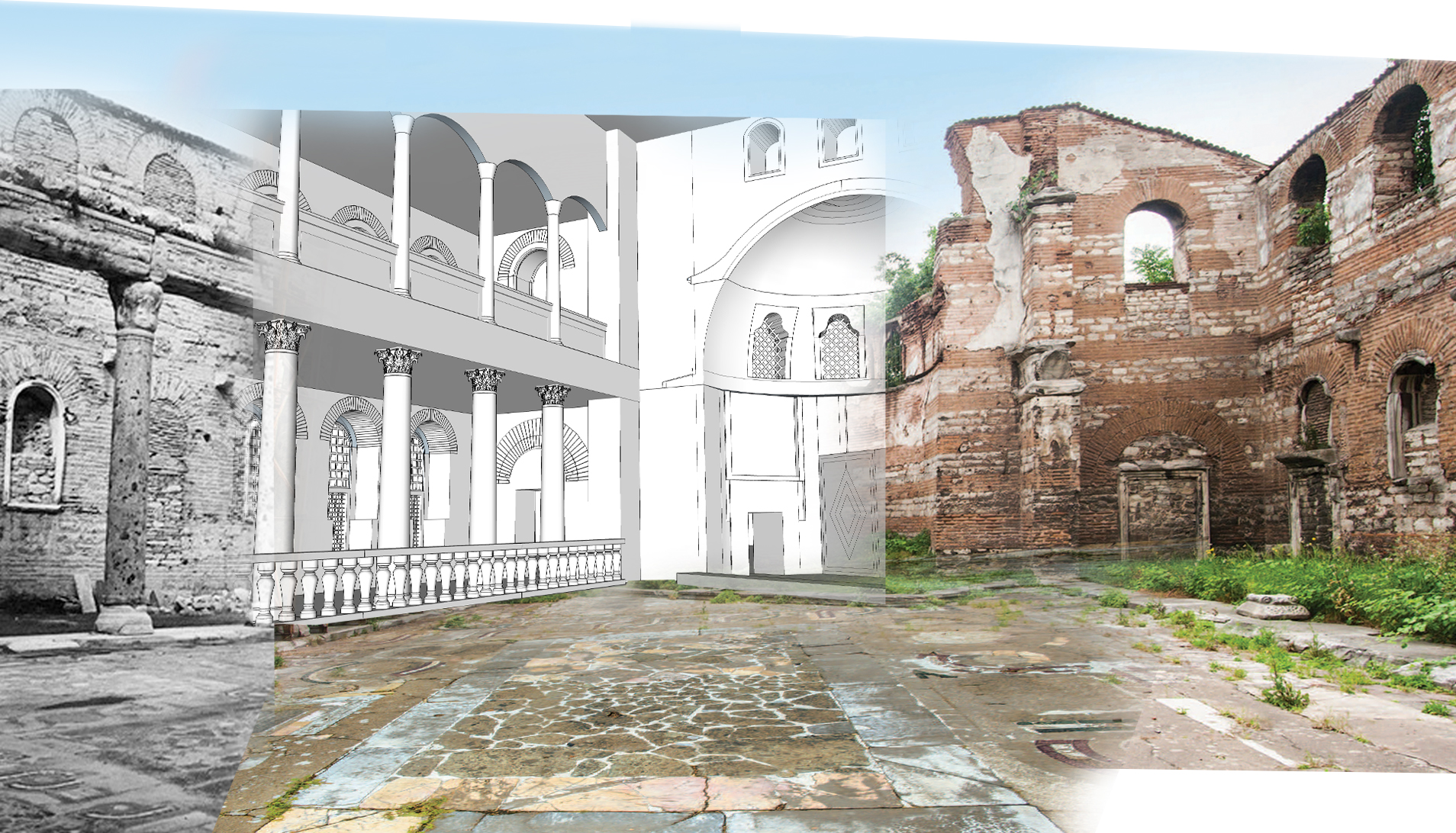by: Camila Schaulson Frenz
The Center for Architecture is proud to announce the recipients of the 2017 Arnold W. Brunner Grant for Architectural Research: Dr. Stephanie Ryberg-Webster from Shaker Heights, Ohio, for “Restoring the Rustbelt: Historic Preservation amid Urban Decline, Cleveland, Ohio: 1970-1985,” and Seher Erdogan Ford, AIA, from Philadelphia, Pennsylvania, for “From Church of Studius to Mosque of Imrahor and Beyond: Architectural Heritage in VR.” Each recipient was awarded $7,500 to further their architectural investigations.
The Arnold W. Brunner Grant is awarded to mid-career architects for advanced study in any area of architectural investigation that will effectively contribute to the knowledge, teaching, or practice of the art and science of architecture. Projects are judged based on their engagement with contemporary local and global architectural issues and the usefulness of the research’s end product. Applications for the 2018 Arnold W. Brunner Grant are due Thursday, February 1, 2018.
Dr. Stephanie Ryberg-Webster, “Restoring the Rustbelt: Historic Preservation amid Urban Decline, Cleveland, Ohio: 1970-1985”
Dr. Stephanie Ryberg-Webster is an Associate Professor and Program Director for the Master of Urban Planning & Development Program at the Levin College of Urban Affairs at Cleveland State University. She is a prominent scholar in urban history and architectural preservation with a focus on post-industrial cities. She earned tenure in 2016 for her research on the history of architectural preservation, historic rehabilitation tax incentives, and the preservation of African American heritage in Cleveland. Ryberg-Webster earned a PhD in City and Regional Planning at the University of Pennsylvania School of Design. She holds a Master of Historic Preservation from the University of Maryland School of Architecture, Planning & Preservation and a Bachelor of Urban Planning from the University of Cincinnati. Ryberg-Webster also sits on the board of the Cleveland Restoration Society.
Ryberg-Webster’s project, “Restoring the Rustbelt: Historic Preservation amid Urban Decline, Cleveland, Ohio: 1970-1985,” explores the role of 1970s-era historic preservation in shaping contemporary Cleveland. She will investigate how a preservation ethic emerged in a subset of local civic leaders as a means of revitalizing their city amid severe urban crises. Relying on archival research and interviews, Ryberg-Webster seeks to explore the motivations of actors engaged in preservation, uncovering the challenges of restoring the built environment of a declining city.
Ryberg-Webster’s work is part of the growing literature on the history of preservation. While focusing on Cleveland, her research also advances scholarship around the preservation of rust-belt cities in the face of decades of entrenched economic and population loss, deterioration, and abandonment. Tensions about how to revitalize these cities remain prominent in public discourse; a better understanding of historical motivations for preservation provides lessons for scholars, practitioners, and policymakers. Ryberg-Webster’s research will be disseminated via a scholarly book and will be presented at numerous planning and historic preservation conferences.
Seher Erdogan Ford, AIA, “From Church of Studius to Mosque of Imrahor and Beyond: Architectural Heritage in VR”
Seher Erdogan Ford, AIA, is co-founder of EFFO, a design and research practice based in Philadelphia and Istanbul. She is also an Assistant Professor and Foundations Coordinator at the Tyler School of Art at Temple University. From 2013-2015, she served as a full-time lecturer at the Faculty of Art & Design at Kadir Has University in Istanbul, Turkey. Her research focuses on architectural heritage and representational and documentation techniques assisted by new, digital media. A licensed architect in New York State, Erdogan Ford worked at Gwathmey Siegel Associates, Robert A.M. Stern Architects, and Rogers Marvel Architects. Ergodan Ford received a Bachelor of Arts and Master of Architecture degrees from Yale University, where she was the recipient of Moulton Andrus Award for excellence in art and architecture.
Erdogan Ford’s Brunner proposal, “From Church of Studius to Mosque of Imrahor and Beyond: Architectural Heritage in VR,” will explore the complex and multi-layered history of a 1,600-year-old building, a contested site of multiple histories and identities. Originally a 5th-century Byzantine basilica church, the Church of Studius was converted to a mosque after the 15th-century conquest of Istanbul. It subsequently served as a Sufi lodge, was closed by the Turkish Republic in the early 20th century, and is now scheduled for reopening as a mosque under the auspices of the Turkish Republic Directorate of Cultural Heritage and Museums.
Beyond advancing scholarship and awareness around the oldest remaining ecclesiastical Byzantine structure in Istanbul, Erdogan Ford’s project offers a critique of conventional modes of architectural representation, often inadequate at integrating the complexities of cultural context, temporal aspects, and non-visual sensory qualities. She seeks to publish a dynamic, web-based platform of the site in 3D at different points in time, enhanced by a multimedia archive and virtual reality technology. Erdogan Ford’s proposal will serve as a model for a digital, three-dimensional research and design tool working within the historic context, developing an augmented version of sites that connects their material history with sociocultural factors.









